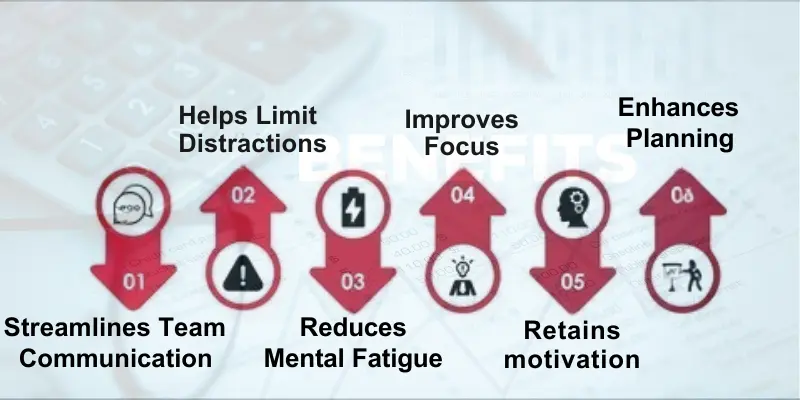What is Pomodoro Technique? The Ultimate Time Management Method
Published: 11 Sep 2025
Are you looking at a long to-do list, unsure how to start or stay focused? What is the Pomodoro Technique, and how can it help you get things done? It’s a simple but powerful time management method to break your work into 25-minute focused intervals, followed by short, refreshing breaks. Using the Pomodoro Technique, students, beginners, and young professionals can overcome procrastination and accomplish their goals more efficiently.
I’m Tanveer, a self-management expert with years of experience helping people master their time. In this article, I explain the Pomodoro, its origins, and simple steps to apply it to your daily routine.
By the end, you’ll learn how to boost productivity, eliminate distractions, and take control of your schedule. Let’s get started, you’ve got this!
Understanding: What is the Pomodoro Technique
The Pomodoro Technique is a way to manage your time that keeps you focused and effective by working in short, set periods. Think of it as breaking a big meal into bite-sized portions; easier to handle and just as satisfying when you finish. It’s simple, practical, and perfect for anyone struggling with procrastination or distractions.
1. Origin of the Pomodoro Technique
Francesco Cirillo developed this game-changing technique in the late 1980s while a college student searching for effective ways to improve his focus. He used a cooking timer shaped like a tomato to break his study time into 25-minute sessions, calling them “Pomodoros” (the Italian word for tomato).
2. How It Works
You have to take five steps for the Pomodoro technique:
- Choose a task to focus on.
- Set a timer for 25 minutes.
- Work on the task without letting distractions interrupt you.
- When the timer rings, take a 5-minute break to recharge.
- Repeat the process, and after every four Pomodoros, take a longer break of 15–30 minutes.
I’ve personally used this method during busy project deadlines. Breaking work into small chunks made even overwhelming tasks feel manageable, like climbing a staircase one step at a time instead of all at once.
3. Why is It Called Pomodoro?
- The word “Pomodoro” is derived from the Italian word for tomato. It was inspired by the kitchen timer Cirillo used during his initial experiments. The timer became a symbol of his technique, representing simplicity and consistency.
- Much like how a tomato ripens with time, your focus improves with consistent practice using the Pomodoro Technique.
Benefits of the Pomodoro Technique
The Pomodoro Technique isn’t just about working harder; it’s about working smarter. By structuring your time with intervals of focused work and regular breaks, you can enhance productivity while maintaining energy and focus.
Let’s explore how this method can benefit you in different areas of your work and life.
1. Increased Focus and Concentration
- One of the greatest difficulties in today’s fast-paced world is staying focused. The Pomodoro Technique helps tackle this by limiting work periods to 25 minutes.
- Think of it like sprinting; short bursts of intense effort that prevent exhaustion.
- I’ve noticed that timed breaks help me avoid distractions and stay focused on what I’m doing.
2. Better Time Management
- The Pomodoro Technique breaks tasks into smaller, manageable chunks, making them feel less overwhelming.
- It’s like dividing a big project into bite-sized pieces that you can easily tackle one at a time.
- I’ve noticed that this approach helps me prioritize tasks more efficiently, leading to a more organized day and less stress.
Time management is life management.Robin Sharma
3. Reduced Procrastination
- Procrastination often stems from the feeling that a task is too big or daunting. You reduce that overwhelming feeling by focusing on just one Pomodoro session at a time.
- Starting small makes it easier to take the first step; the task is well underway before you know it.
- I’ve noticed that I quickly get in the zone and stay focused once the timer is on.
The key is not to prioritize what’s on your schedule, but to schedule your priorities.Stephen Covey
4. Improved Work-Life Balance
- The Pomodoro Technique isn’t just about working; it’s also about taking breaks to recharge. Regular breaks help reduce mental fatigue, essential for maintaining a healthy work-life balance.
- Taking short pauses gives your mind a chance to rest and reset, improving overall well-being.
- I’ve found that these breaks make a huge difference in keeping me refreshed throughout the day.

How to Implement the Pomodoro Technique in Daily Life
Adding the Pomodoro Technique to your routine is simpler than you might think. All it takes is a timer and some discipline to see how it can transform your work.
Let’s discuss it in table form so you can start using this method today.
| Steps | Details | Personal tips |
|---|---|---|
| Tools you need | Tools you need Use a timer (kitchen timer or apps like Focus Booster or Pomodone). | I use a simple app on my phone; it’s like having a coach keeping me on track and reminding me to rest. |
| Ideal scenarios for using it | Great for studying, writing, coding, or even cleaning tasks. | I’ve found it helpful during long study sessions, it’s like turning a marathon into manageable sprints. |
| Tips for maximizing techniques | Turn off notifications to eliminate distractions. Use a dedicated workspace. Adjust intervals if 25 minutes doesn’t work for you. | I prefer slightly longer intervals for creative tasks in a quiet environment to maintain focus. |
Common Mistakes to Avoid When Using Pomodoro
The Pomodoro Technique is powerful, but like any tool, it only works if used correctly. Avoiding common mistakes ensures you get the most out of it.

Let’s look at a few pitfalls to steer clear of and how to fix them.
| 1. Skipping Breaks |
|---|
|
| 2. Overloading the To-Do List |
|---|
|
| 3. Using the Technique for Overly Long Sessions |
|---|
|
By avoiding these mistakes, you can use the Pomodoro Technique effectively and stay productive without exhausting yourself.
You don’t have to be great to start, but you have to start to be great.Zig Ziglar
Conclusion: Consistency is key
So, guys, it’s time to wrap up. In this article, we’ve covered what the Pomodoro Technique is in detail. I’ve seen how this method helps tackle procrastination and stay on track.
Start small, with just two or three Pomodoro sessions daily, and gradually make it part of your routine. I recommend using a digital timer to make the process smoother.
Why wait? Take control of your time today—set that timer and start your first Pomodoro session now!
FAQs About the Pomodoro Technique
For more information, you can read the questions:
Absolutely! It works well for collaborative tasks, like brainstorming or group studies. Just ensure everyone agrees on the intervals and sticks to them.
The technique is named after the Italian word “Pomodoro,” which means tomato. The creator, Francesco Cirillo, used a tomato-shaped kitchen timer for his time blocks. The name stuck and became a symbol of the method.
Yes, you can! While 25 minutes is the standard interval, you can tweak it to fit your workflow. Some people prefer longer or shorter sessions, depending on their tasks.
If you get distracted, jot down the distraction and refocus on your task. The key is to train your mind to stay focused for the full session. Over time, distractions will naturally reduce.
Sure! Divide the job into smaller tasks and work on them individually using the Pomodoro technique. This will help you stay prepared and avoid feeling stressed.
While it’s effective for many, it might not work for everyone. Experiment with it to see if it fits your style, and adjust the intervals as needed.
| Interesting Facts |
|---|
|
If this helped you even 1%, smile – it means everything.
(No email needed. No follow required. Just smile.)

- Be Respectful
- Stay Relevant
- Stay Positive
- True Feedback
- Encourage Discussion
- Avoid Spamming
- No Fake News
- Don't Copy-Paste
- No Personal Attacks

- Be Respectful
- Stay Relevant
- Stay Positive
- True Feedback
- Encourage Discussion
- Avoid Spamming
- No Fake News
- Don't Copy-Paste
- No Personal Attacks







